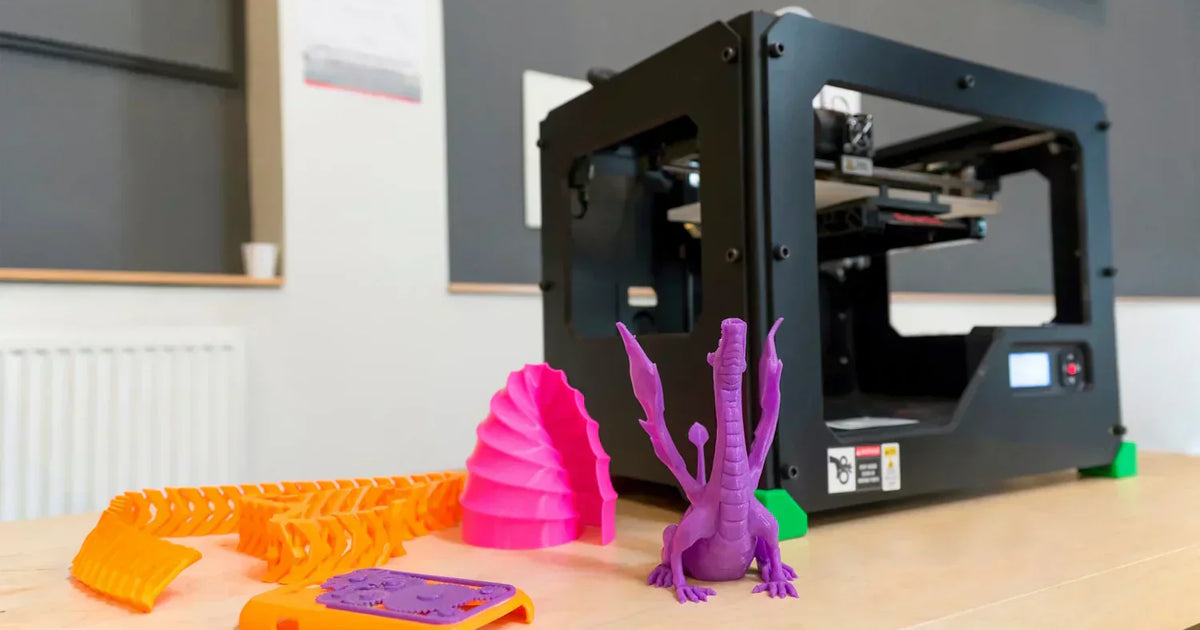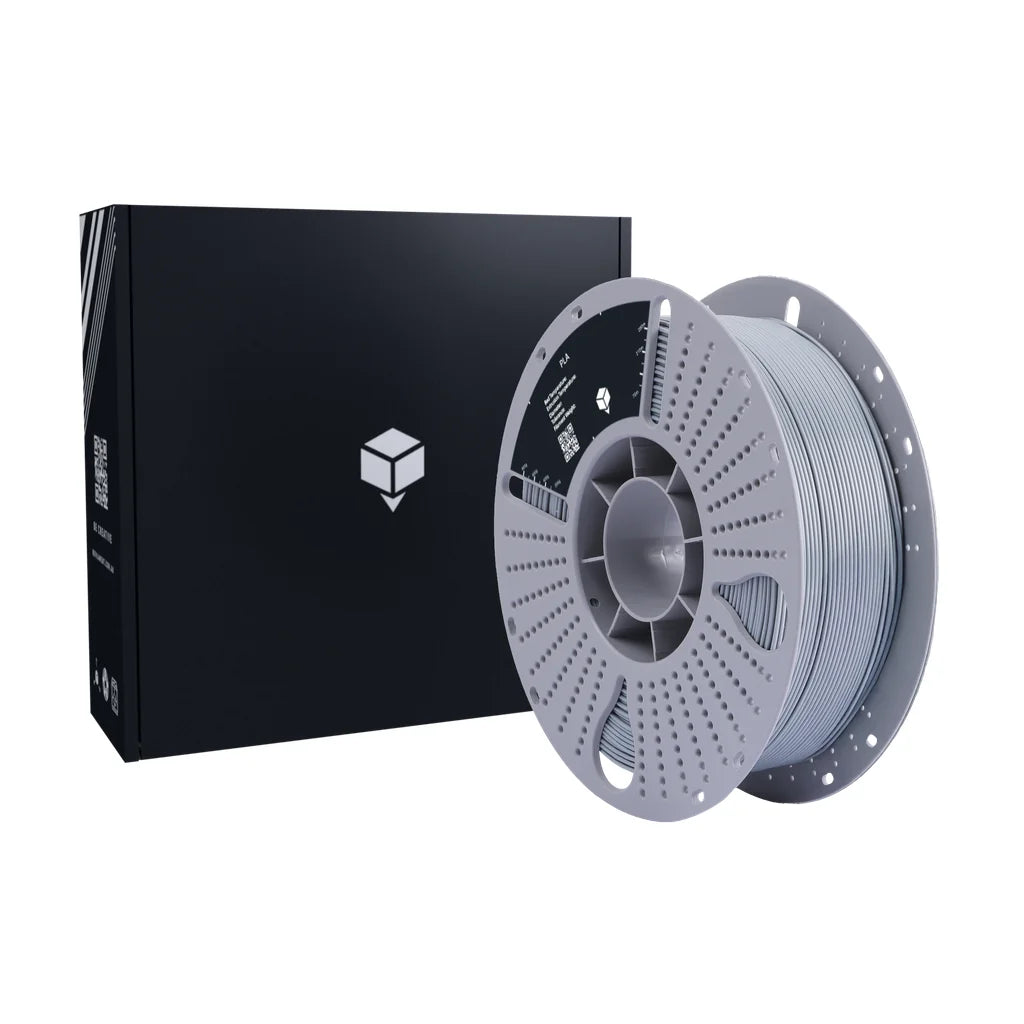
Have you ever dreamt of turning a digital idea into a tangible object with the flick of a switch? That's the magic of 3D printing! Once considered a futuristic concept, 3D printing has swiftly moved from industrial workshops to homes, schools, and small businesses across Australia and the globe. If you've been hearing the buzz about this incredible technology but aren't quite sure what it is or how it works, you've come to the right place. Welcome to your comprehensive beginner's guide to 3D printing.
Here at Blue Ember, we believe in empowering creators and curious minds alike. In this guide, we'll demystify the world of additive manufacturing, explaining everything from the basic principles to its exciting real-world applications. Get ready to explore a technology that's revolutionising how we design, create, and innovate.
Table of Contents
- What is 3D Printing? Understanding Additive Manufacturing Explained
- How Does 3D Printing Work? The Core Process from Digital to Physical
- Common 3D Printer Technologies for Beginners
- Unleashing Creativity: Real-World 3D Printing Applications and Benefits
- Beyond the Basics: Limitations and the Exciting Future of 3D Printing
- Frequently Asked Questions About 3D Printing
- Conclusion & Your Next Step into 3D Printing
What is 3D Printing? Understanding Additive Manufacturing Explained
At its core, what is 3D printing? It's a groundbreaking manufacturing process that builds three-dimensional objects layer by layer from a digital design. Think of it like building with LEGOs, but instead of snapping pre-made blocks together, you're precisely adding tiny layers of material until your complete model emerges. This method is officially known as additive manufacturing because, unlike traditional "subtractive" methods (like carving, milling, or drilling, which remove material from a larger block), 3D printing adds material only where it's needed.
To put it simply, imagine a skilled pastry chef decorating a cake. Instead of carving a shape out of a large block of cake, they meticulously pipe icing, layer by layer, building up an intricate design. A 3D printer works in a very similar fashion, but with industrial materials like plastics, metals, or composites, guided by a digital blueprint. This process allows for incredible complexity and customisation that was previously impossible or prohibitively expensive.
So, when someone asks, "what is 3D printing?", you can tell them it's a revolutionary way to create physical objects by adding material layer upon tiny layer, guided by a computer. It's truly a game-changer in how we approach design and production, opening up a world of possibilities for everyone, from engineers to everyday hobbyists.

How Does 3D Printing Work? The Core Process from Digital to Physical
Understanding how does 3D printing work might seem complex, but for beginners, we can break it down into a few straightforward steps. The magic really happens when a digital design is translated into a physical form. Here's the basic 3D printing process explained:
-
Design the Object (CAD Model): Every 3D print starts as a digital blueprint. This is
usually created using Computer-Aided Design (CAD) software. Think of it as digital sculpting. You can design
your own object from scratch, modify an existing design, or download countless free designs from online
libraries. The file is typically saved in a universal format like .STL or .OBJ.
For example, if you wanted to print a custom phone case, you'd design it in CAD software, giving it the exact dimensions and features you desire.
-
Slice the Model (Slicing Software): Once you have your 3D model, you need to "slice" it.
This is done using specialised software called a 'slicer'. The slicer takes your 3D model and virtually cuts
it into hundreds, sometimes thousands, of horizontal layers – much like slicing a loaf of bread.
During this stage, you also tell the software important details like the print speed, layer height (how thick each slice will be), infill density (how solid the inside of your object will be), and whether support structures are needed for overhanging parts. The slicer then generates a G-code file, which is a set of instructions that the 3D printer can understand, telling it exactly where to move and when to extrude material for each layer.
- Prepare the Printer: Before printing, you'll need to load your chosen 3D printer filament (for FDM printers, which we'll discuss next). This involves feeding the filament into the printer's extruder. You'll also need to ensure the print bed is clean and properly levelled to achieve good first-layer adhesion. This is a critical step for successful prints!
-
Print the Object: Now, the exciting part! You load the G-code file (usually via an SD card
or USB) into your 3D printer. The printer's nozzle heats up to the melting point of the filament (e.g.,
around 200°C for PLA filaments or 240°C for PETG filaments). The print head then moves
according to the G-code instructions, extruding tiny amounts of molten plastic, layer by layer, onto the
print bed. Each new layer adheres to the one below it, slowly building up the 3D object from the bottom up.
It's a mesmerising process to watch, as your digital creation gradually takes physical form. Depending on the size and complexity, this could take minutes or many hours.
- Post-Processing: Once the print is complete, the object is removed from the print bed. Sometimes, support structures need to be carefully removed (if your design had overhangs that the printer couldn't print in mid-air). You might also want to sand, paint, or otherwise finish your print to achieve a desired aesthetic or functional quality.
This step-by-step method makes 3D printing for beginners much more accessible. It’s about understanding that every complex object starts as a series of simple, flat layers. At Blue Ember, we provide high-quality filaments like PLA, ABS, TPU, and ASA to ensure your creations come to life beautifully.
Common 3D Printer Technologies for Beginners
While there are many different types of 3D printer technology, a few stand out as most relevant and accessible for beginners and hobbyists. Let's focus on the most popular one you're likely to encounter:
Fused Deposition Modelling (FDM) / Fused Filament Fabrication (FFF)
- How it works: This is the most common and affordable type of 3D printing. It uses a spool of plastic filament (like those we stock at befilament.com.au) which is fed into a heated print head (the extruder). The extruder melts the plastic and precisely deposits it layer by layer onto a build platform.
-
Materials: FDM printers use a wide variety of thermoplastic filaments. Popular choices
include:
- PLA (Polylactic Acid): Easy to print, biodegradable, and derived from renewable resources. Perfect for beginners and general-purpose prints. We even have fun options like PLA Glow and specific colours like PLA Blue.
- PETG (Polyethylene Terephthalate Glycol): Offers a good balance of strength, flexibility, and temperature resistance, making it more durable than PLA.
- ABS (Acrylonitrile Butadiene Styrene): Strong, durable, and temperature resistant, often used for functional parts. However, it can be trickier to print than PLA or PETG.
- TPU (Thermoplastic Polyurethane): A flexible and elastic material, great for parts that need to bend or absorb shock, such as phone cases or rubber-like gaskets.
- ASA (Acrylonitrile Styrene Acrylate): Similar to ABS but offers much better UV resistance, making it ideal for outdoor applications.
- Pros for Beginners: Relatively inexpensive printers, a vast range of materials, large community support, and easy to maintain.
- Cons: Visible layer lines, not as high resolution as some other technologies, and can sometimes be slower for very detailed objects.
Other Technologies (Briefly Mentioned):
- SLA (Stereolithography) & DLP (Digital Light Processing): These technologies use liquid resin that is cured (hardened) by a light source (laser for SLA, projector for DLP). They offer incredible detail and smooth surface finishes but generally use more expensive materials and require careful handling of liquid resin.
- SLS (Selective Laser Sintering): Uses a laser to fuse powdered material (like nylon) into a solid object. Known for producing strong, complex parts without the need for support structures. Primarily industrial.
For most people getting started, an FDM printer is the perfect entry point into the world of 3D printing, and Blue Ember has all the filaments you'll need to start your journey!

Unleashing Creativity: Real-World 3D Printing Applications and Benefits
The reach of 3D printing extends far beyond simple trinkets. The incredible versatility of additive manufacturing has led to a revolution in various industries, demonstrating a vast array of 3D printing applications and significant 3D printing benefits. Here's a glimpse into how it's changing our world:
Industries Embracing 3D Printing:
- Prototyping & Product Development: This is where 3D printing truly shines. Companies can rapidly create physical prototypes of new products, test designs, and iterate quickly, drastically reducing development time and costs. Imagine a new car part or a consumer electronics device being prototyped in hours rather than weeks.
- Manufacturing & Customisation: For low-volume production or highly customised items, 3D printing is invaluable. From bespoke jewellery to custom medical implants, it allows for unique, tailored solutions that traditional manufacturing struggles to match. This "mass customisation" is a huge benefit.
- Healthcare & Medical: The medical field has seen extraordinary advancements. 3D printing is used to create patient-specific surgical guides, prosthetic limbs that perfectly fit the wearer, dental implants, and even bioprinted tissues and organs in experimental stages.
- Aerospace & Automotive: Producing lightweight, complex parts with intricate internal structures is crucial in these sectors. 3D printing allows for optimised designs that reduce weight and improve performance, leading to more fuel-efficient aircraft and vehicles.
- Education: Schools and universities are using 3D printers to bring theoretical concepts to life, allowing students to design and create physical models for science, engineering, and art projects. It's a fantastic tool for hands-on learning.
- Art & Design: Artists and designers are pushing the boundaries of creativity, creating intricate sculptures, fashion accessories, and unique architectural models that would be impossible with conventional methods.
- DIY & Hobbyists: For the everyday person, 3D printing offers the ultimate customisation tool. You can print replacement parts for household items, design custom organisers, create cosplay props, tabletop gaming miniatures, or simply bring your creative ideas into the physical world. This is where high-quality 3D printer filaments from befilament.com.au really come into their own!

Key 3D Printing Benefits:
- Design Freedom: The ability to create complex geometries and intricate internal structures that are impossible with traditional manufacturing.
- Rapid Prototyping: Significantly faster iteration cycles for product development, reducing time to market.
- Customisation & Personalisation: Easily produce unique, tailored items for individuals or specific needs without high tooling costs.
- Reduced Waste: Additive processes use only the material needed for the part, leading to less material waste compared to subtractive methods.
- Cost-Effectiveness for Small Runs: For low-volume production, 3D printing can be more economical than injection moulding or other traditional methods that require expensive tooling.
- On-Demand Manufacturing: Print parts only when and where they are needed, reducing inventory and supply chain complexities.
As you can see, the impact of 3D printing is enormous, and its influence continues to grow. For those just starting, the ability to rapidly prototype and create custom parts is incredibly empowering. Whether you’re experimenting with a simple PLA filament design or a more robust PETG component, the possibilities are endless.
Beyond the Basics: Limitations and the Exciting Future of 3D Printing
While 3D printing is undeniably revolutionary, it's also important for 3D printing for beginners to understand its current limitations to set realistic expectations. It's not a magic "replicator" from science fiction (yet!), but a powerful tool with specific strengths and weaknesses.
Current Limitations of 3D Printing:
- Speed: For mass production of identical parts, traditional methods like injection moulding are still significantly faster. 3D printing, especially for larger or highly detailed objects, can be a slow process.
- Material Limitations: While the range of printable materials is expanding rapidly (from various plastics like ABS and flexible TPU to metals and ceramics), not every material is printable with every machine. Material properties (strength, flexibility, temperature resistance) also vary greatly between print methods and filaments.
- Cost: While entry-level FDM printers are affordable, industrial-grade machines and exotic materials can be very expensive. The cost per part for high-volume production can also still be higher than traditional methods.
- Post-Processing: Many 3D prints require some form of post-processing, like removing support structures, sanding, or painting, which adds to the overall time and effort.
- Part Size: Most consumer-grade 3D printers have a limited build volume, restricting the size of objects you can print in one go.
The Exciting Future of 3D Printing:
Despite these limitations, the field of 3D printing is evolving at an astonishing pace. Here's what we can look forward to:
- New Materials: Research is continually introducing new and advanced materials, including composites, multi-material printing, smart materials, and even food-safe options. Imagine printing objects with embedded electronics or self-repairing properties!
- Faster & More Accurate Printers: Improvements in hardware and software are leading to quicker print times, higher resolution, and greater reliability.
- Automation: Increased automation in the entire 3D printing workflow, from design optimisation to post-processing, will make it more efficient for industrial applications.
- Bioprinting: The ability to print living tissues and organs for medical transplants is an area of intense research, holding immense promise for the future of healthcare.
- Construction: Imagine printing entire houses or building components on-site, offering affordable and sustainable housing solutions.
- Decentralised Manufacturing: The ability to produce items locally and on-demand could revolutionise supply chains, reducing waste and environmental impact.
The journey from "what is 3D printing?" to its transformative future is truly captivating. This technology isn't just changing manufacturing; it's empowering individuals and industries to innovate in ways we've only just begun to imagine. Blue Ember is proud to be part of this exciting journey, providing the essential filaments that fuel your creativity.
Frequently Asked Questions About 3D Printing
Is 3D printing difficult for a beginner?
Starting with 3D printing can feel a bit daunting, but it's becoming incredibly accessible for beginners. Modern consumer-grade FDM printers are much more user-friendly, with auto-levelling features and clearer interfaces. While there's a learning curve to understand software like CAD and slicers, many online communities, tutorials, and pre-made models make it easy to get started. Choosing user-friendly filaments like PLA is also a great way to ease into the hobby.
What materials can be 3D printed?
The most common materials for accessible 3D printers are plastics, known as filaments. These include PLA (Polylactic Acid), PETG (Polyethylene Terephthalate Glycol), ABS (Acrylonitrile Butadiene Styrene), and flexible TPU (Thermoplastic Polyurethane), as well as ASA. Industrial 3D printers can also use a vast array of materials, including various metals, ceramics, resins, composites, nylon, and even biological materials. For your home setup, befilament.com.au offers a wide range of quality filaments to get you started.
How much does a 3D printer cost?
The cost of a 3D printer varies significantly. Entry-level FDM printers suitable for hobbyists and beginners can range from AU$200 to AU$600. Mid-range printers with more features and better reliability might cost AU$600 to AU$1500. Industrial-grade printers, used in professional settings, can cost thousands or even tens of thousands of dollars. The good news is that you don't need to break the bank to start enjoying 3D printing.
What can I make with a 3D printer?
The possibilities are virtually endless! For beginners, common projects include custom phone holders, organisers, decorative figurines, replacement parts for appliances, cosplay props, board game accessories, and functional prototypes. More advanced users create intricate art, engineering components, medical models, and even personalised tools. If you can design it or find a design online, you can likely print it!
Are 3D printed objects strong and durable?
The strength and durability of a 3D printed object depend on several factors: the material used (e.g., ABS and PETG are generally stronger than PLA), the print settings (like infill density and layer height), and the design itself. While not always as strong as injection-moulded parts, 3D prints can be surprisingly robust and perfectly suited for many functional applications. For parts requiring flexibility, TPU is an excellent choice.
Conclusion & Your Next Step into 3D Printing
From understanding "what is 3D printing?" to exploring how does 3D printing work, you've now taken your first exciting steps into the world of additive manufacturing. We've covered the fundamental principles, the basic 3D printing process, common technologies, and the myriad of 3D printing applications and benefits that are transforming industries and empowering individuals.
The journey from a digital concept to a tangible object is truly an amazing one, and it's more accessible than ever for 3D printing for beginners. Whether you're a curious student, a budding entrepreneur, or a hobbyist looking to unleash your creativity, 3D printing offers an unparalleled opportunity to innovate, design, and create. While it has its limitations, its potential for the future is boundless.
Ready to bring your ideas to life? At Blue Ember, we're passionate about fuelling your creative journey with Australia's best selection of high-quality 3D printer filaments. From easy-to-use PLA for your first prints to robust PETG and flexible TPU for more advanced projects, befilament.com.au has everything you need to start printing today. Explore our range and discover the perfect materials for your next masterpiece!

